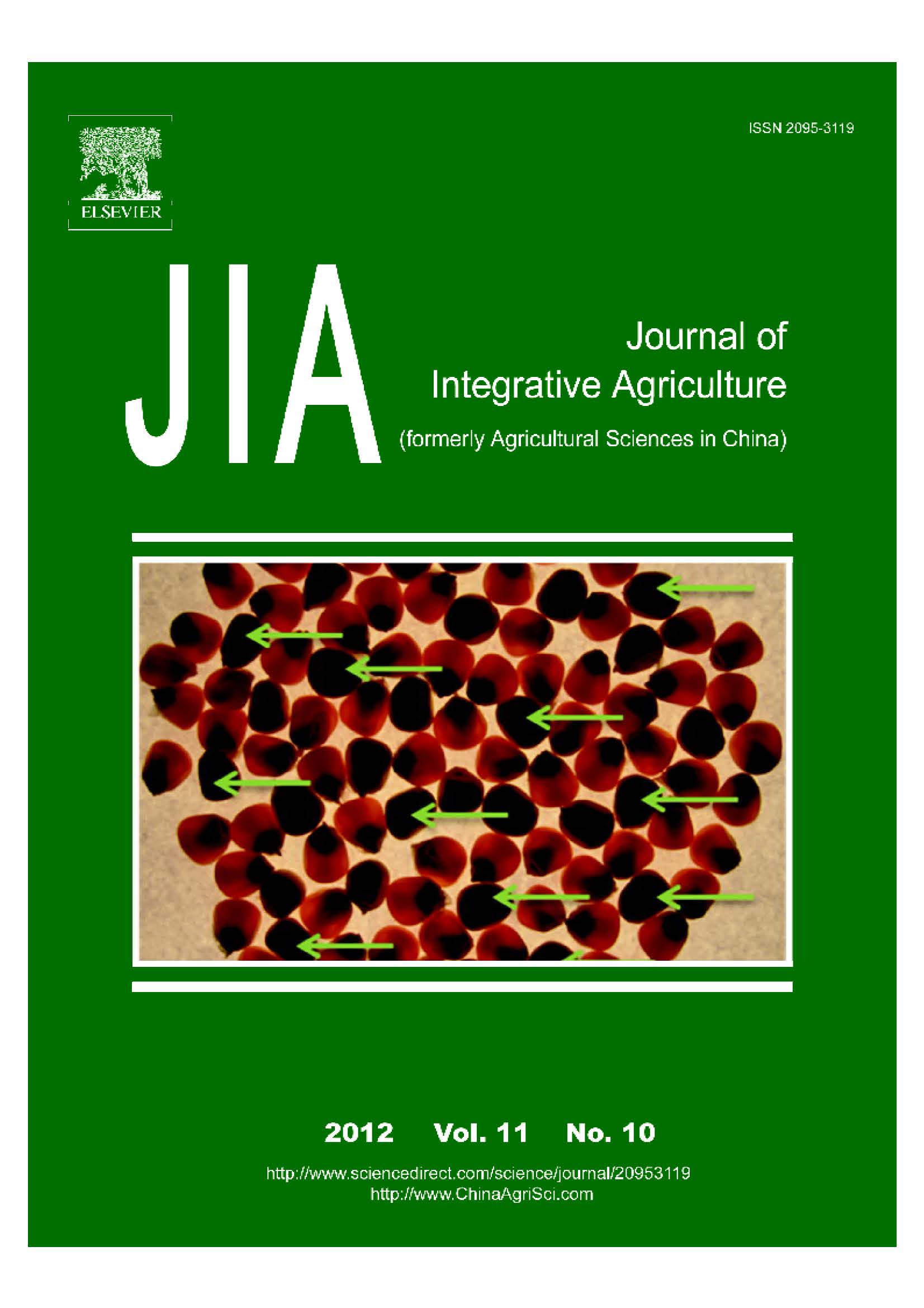|
|
Effect ofAscorbic Acid and Silicium on Photosynthesis, Antioxidant Enzyme Activity, and Fatty Acid Contents in Canola Exposure to Salt Stress
Ahmad Bybordi
2012, 12(10):
1610-1620.
DOI: 10.1016/S1671-2927(00)8694
The effects of exogenous ascorbic acid and silicium on leaf fresh weigh, seed yield, photosynthesis, changes of the activities of major antioxidant enzymes, nitrate reductase activity, proline accumulation, chlorophyll content, and fatty acid composition were investigated in salt-stressed canola. A hydroponic pot experiment was conducted based on randomized complete block design, factorial arrangement was used with 16 combinations of salinity stress (0, 100, 200, and 300 mmol L-1 NaCl), ascorbic acid (0 and 30 mmol L-1), and silicium (2 and 4 mmol L-1 from potassium silicate) with three replicates. The results showed that salinity significantly decreased leaf area and leaf fresh weight, seed yield, photosynthesis, nitrate reductase activity, chlorophyll content, and seed protein percentage. Conversely, respiration, antioxidant enzymes activity, proline accumulation, and linolenic acid percentage increased due to salt stress. Ascorbic acid application improved photosynthesis and seed yield and mitigated antioxidant enzyme activity. In addition, nitrate reductase activity and chlorophyll a and b were positively affected by ascorbic acid. Regarding silicium application, that was found that leaf area, leaf fresh weight, seed yield and photosynthesis, ascorbate peroxidase activity, nitrate reductase activity, and chlorophyll content increased, while respiration decreased. Furthermore, silicium had not significant effect on antioxidant enzyme activity. In general, ascorbic acid and silicium were involved in the defensive mechanisms against salinity stress and it can be suggested that, ascorbic acid and silicium application had positive effect on canola growth under conditions of salt stress.
|
